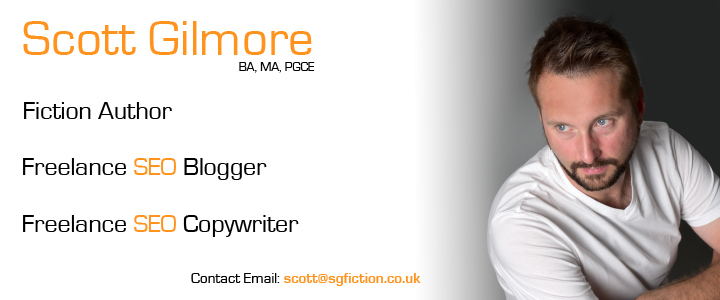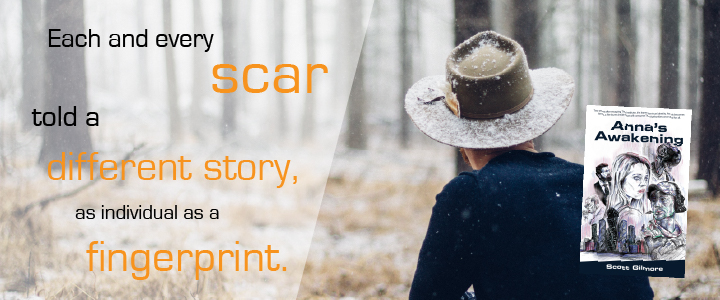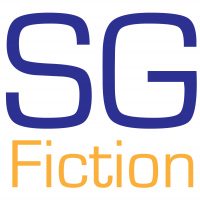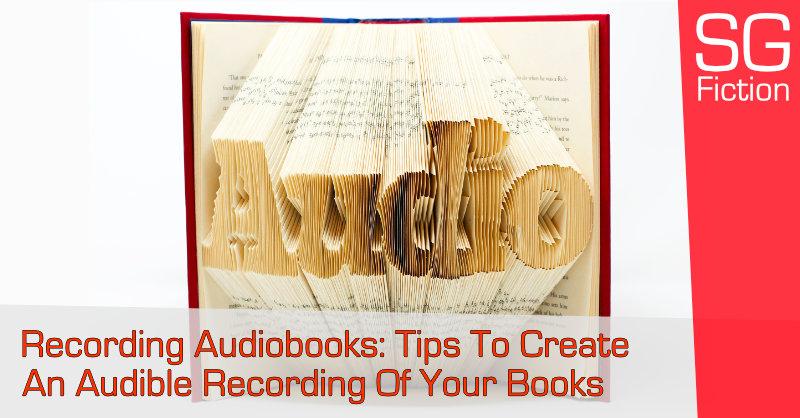Recording audiobooks can be a daunting task for any writer. However, it needn’t be that way. Use my 7 tips to create an audible recording of your book.
In this Recording Audiobooks article, you will find information on the following areas:
- Why starting with yourself is vital. If you are narrating your audiobook, it is essential to find a pace and narration style that you’re comfortable with,
- How your equipment is necessary, but it isn’t the end of the world if you don’t have a professional setup,
- Audio recording software is vital to record your project, as well as edit and master the audio files,
- Why you should get to know the interface and record a few sound checks. Understanding where the most user-friendly tools are is critical to saving time and mounting frustrations,
- Tips for narrating your audiobook, as it is a long process and having an understanding of how you should deliver your voice is vital,
- To edit and master your audio file, you will need to understand which noises to cut out and the plug-ins or filters to use to boost your voice and produce a cleaner audiobook.
Read the rest of the Recording Audiobooks article and learn how you can share your latest work like never before.
Just before Covid lockdown, I had the idea of finally recording audiobooks for both of my novels, Inside Iris and Anna’s Awakening. By doing so, I would be able to upload the files to Audible and give consumers the option of being able to listen to both fiction books on the move. However, as the father of two young children, homeschooling and other responsibilities ate into my time, meaning the audiobook projects have been delayed.
As we now move back into something that resembles normality, and my little ones go back to full-time education, several creative projects will resume in the coming weeks. One of which is my upcoming short story collection, Hexingham Chronicles, and the other is the audiobook recording project.
Many writers look to the idea of recording their audiobooks as something of a daunting task. With multiple websites out there offering advice that ranges from the budget recording to the high-end studio offering, there is no doubt that the recording process can be terrifying for those who are not technically minded. However, options are out there for people who wish to offer their latest work as an audiobook without having to invest thousands of dollars, pounds, or euros into the project.
In this creative writing blog, I hope to offer some advice to those who wish to tackle their audiobook in the coming months or years. I will share how I plan to record the Inside Iris audiobook and offer it for purchase in the coming months.

Recording Audiobooks: Start With Yourself
As a fiction author, you can be forgiven for not being up to speed with the latest trends that audiophiles will know in detail. However, this does not mean that recording your audiobook is entirely out of the question.
Rather than seeing recording audiobooks as an insurmountable task, you have to convince yourself that you are capable of doing the job. Yes, it may be a process of trial and error with your test chapters, and you will make mistakes. However, if you are willing to put in the time and learn from those mistakes, you can record your audiobooks, poems and short stories, saving yourself much money in the process.
Once you have convinced yourself that you are capable of completing the job at hand, you can now start looking at yourself as the narrator. If you have a friend or partner who is a professional VO artist, then you don’t need to worry about this part. On the other hand, if you choose to narrate the book yourself, you will need to practise the speed and delivery of your reading.
When working in education, I learned to take my time as I delivered lessons and read to the children. This is something I have over a decade of experience working on as a teacher and a provider of e-learning courses. However, this does not make me a seasoned professional when it comes to narrating an audiobook.
When I recorded extracts and chapters of my novels for my SG Fiction YouTube Channel, it took me hours to record the audio, edit the track, and then master the sound before putting it into a slideshow for the channel. Over the course of the recordings, I made mistakes, grew frustrated at times, and was interrupted by cars driving past or neighbours cutting grass. Still, when I sat down to press the record button, I had to slip back into that narrator persona to deliver the best reading I could.
When starting on the road to making lengthy audio recordings, you need to take some time to consider how you want yourself to come across to the listeners, decide on speed and tone for the story, and be prepared for setbacks or frustrations. By making plans and preparations before hitting the big red button, you will be in a better position for the arduous road ahead.
Your Equipment
When consulting some articles online that share tips on recording audiobooks, they can recommend spending money on the most expensive equipment to achieve the best possible sound quality. Unfortunately, many writers do not have the funds or the technical knowhow to get the best out of such a recording set up. Therefore, it is sometimes best to buy good quality, mid-range equipment to get a stable recording quality, but without breaking the bank.
My home computer is a Macbook Pro laptop that I use for writing, my SG Copywriting business, and recording music to use as stock tracks when making YouTube videos. I understand that this such a laptop is a luxury, but as long as you have a relatively new laptop that is powerful enough to run your recording software, you will be good to go.
When it comes to the microphone, there are dozens of podcast microphones available on sites like Amazon that will give your DIY audiobook recording stable sound quality. When I researched podcast microphones for recording excerpts from Inside Iris and Anna’s Awakening, I settled on buying the Blue Yeti mic for around £120. This microphone is an excellent all-round piece of kit for those who are recording audiobooks at home.
One final must-have piece of equipment is a decent set of headphones. These can be plugged into your laptop or the audio jack on your mic. Either way, they allow you to listen back to the segments of recordings as you go along without ambient noise interference. That way, you can listen out for mouth noises and background noises that laptop speakers won’t pick up as well. I went for a set of JBL Bluetooth Noise Cancelling headphones that would be comfortable and give me excellent sound quality.
Once you have your hardware, it is essential to consider the recording software you use. Online, there are free pieces of software, such as Audacity, that can be used to record your audiobook. However, I decided to spend the money on Logic Pro X for the Mac. As someone who has recorded music for over twenty years, I enjoy having such an expansive studio at my fingertips. Yes, many of the music tracks I record never see the light of day, but I know that I can compose my music without limits. Therefore, I can apply the multifaceted tools within Logic Pro when recording audiobooks.

Audiobook Recording ‘Studio’
Where you record, has a significant impact on the quality of the product you produce. It is critical to keep ambient noise to a minimum, so removing background sounds that could show up in the recording is a must.
When researching this article, I saw many images where authors set up a makeshift studio inside a walk-in wardrobe or a closet. As there is little room inside these spaces, and clothes are hanging around you, it reduces echo.
Laptops appear to be the preferred computer to use for recording over a desktop PC or Mac. The reason for this is the reduced hum of fans and clicks from disc drives. As a laptop is portable, it means you can find a quiet spot almost anywhere in your house.
It is ultimately impossible to remove all noise imperfections and interruptions when recording audiobooks outside of a professional studio. If you find an external noise interrupts your recording, it is best to remain patient and pause until it stops. Remember, you can always crop out unwanted sounds in the editing stage. Just ensure you leave enough of a gap between the noise ceasing and continuing to read. This way, you will be able to crop out the offending sound without it bleeding into your next line.
Interface Familiarisation & Sound Checks
Whether you choose to use Logic Pro, Audacity, or a similar piece of recording software, it is essential to familiarise yourself with the dashboard and the key controls or tools that you will need to record the audiobook.
This does not mean that you have to become an expert overnight, but it does mean you may have to familiarise yourself with some beginner YouTube videos of how to navigate around the dashboard. Many audio content creators will offer basic tutorials on YouTube that will show you exactly how to utilise the key tools required and also provide tips that can help you avoid some pitfalls along the way.
As you get used to the interface, choose a short passage from the book for a soundcheck towards the project ahead. Here, it is vital to listen back to the piece through headphones and analyse the voice tone you are looking to achieve, your reading speed, and the microphone level. This way, you will be able to make corrections, such as raise the master volume on the microphone and take note of your distance from the mic to maintain a consistent recording level.
When working on Logic Pro, I know where to place my microphone, how loud to have the levels and which position I need to be in when I read. By preparing these steps ahead of the recording itself, it means there is no need to adapt levels throughout the task at hand. I can simply focus on reading the book in the manner I wish to deliver.
This step is vital as every writer’s voice will differ. For example, a large male may have a louder, deeper voice to a petite female. This will mean you have to make allowances to ensure the volume doesn’t peak at stages through your recording and cause distortion or crackles in the audio. By having the microphone set too loud or having too much gain, the sound can be distorted and produce a product of lesser quality. Therefore, spend some time fixing the levels before you invest days or weeks recording audio that is too loud and distorted.

Narration Tips For Recording Audiobooks
As you set out on the epic journey of recording your audiobook, it is essential to consider how you wish to come across to the listener. There are some writers out there who will not have an issue with reading in a dramatic, enthusiastic manner. However, others may be incredibly timid and nervous at the prospect of reading four hundred pages.
Many people dislike the sound of their voice, but this is something you must learn to get over if you are going to narrate your audiobook. If you decide to record the book yourself, you will need to consider:
- A Dramatic Style: Here, you will read the book as though it is a dramatic reading, where you evoke a different voice for each character. To some, this style can come across as cheesy and a little over the top. However, if this is the tone you wish to go for, it is essential to plan the tone and voices before recording to maintain continuity. For this approach, you will likely be extraordinarily confident and good with voices.
- The Natural Style: As an author, you will likely be used to reading stories in front of people, whether at book stores or launches. When we do this, we add some personality and expression to the reading but will keep it within a level that we feel is natural to us as writers. When I read, I like to work with this approach. As someone who isn’t extremely flamboyant, I don’t feel comfortable reading like an actor and almost performing on the reading. By approaching the recording in this manner, we can add some expression to the work we have written, giving characters and the book itself some personality to help lift it from the page.
- The Subtle Style: if you are a timid writer, both of the options above may make you feel anxious. However, that doesn’t mean you have to hire a narrator. Remember, many listeners like the idea of the author reading their book to them. You are sharing your story with them. Many listeners prefer this Subtle Style of narration to the extravagant ‘bells and whistles’ option of the Dramatic Style. By calmly reading your work, with no fancy voices or expression, you are still able to pass on a unique experience to those who listen to your audiobook.
Some general tips to bear in mind include:
- Hydration: As you sit down to a lengthy stint of reading and recording, you will want a bottle of water near you at all times. The bottle means you won’t spill it over your beautiful laptop and it also means that your mouth won’t get dried out with caffeinated drinks, like coffee,
- Be Patient: You will make mistakes during the recording. It’s part of the process. You will also have an interruption or two. Therefore, it is essential to remember to allow for these occurrences and not let them frustrate you. Remember, if you grow frustrated, the audience will hear it in your voice. You can always cut out the errors in the editing process,
- Breathe: This sounds obvious, but it’s incredible how one can forget to allow for deep, full breaths. Not only will they keep you calm, but they will also allow for a smoother reading style. The breathing will show up on your audio but, by allowing a short pause each side of it, you can clip the audio file accordingly in the edit.
With all of these tips to consider, the most crucial aspect to remember is that you need to be yourself when recording audiobooks. It is a method for you to speak directly to your readership, so use it. Allow your personality to come across alongside your characters and the tone of the story you are telling.
The Editing Process
Once the recording process has been completed, it is time to start editing the audio files. Here, it is vital to use your headphones and turn the volume up to a relatively loud level. By working with a louder volume, you will pick up on less-obvious noises that may fall under the radar when listening through speakers, especially those on your laptop.
As you scrutinise the audio, you will inevitably pick up on clicks from opening and closing your mouth, breaths, and squeaks from your chair. Where you may not remove every minute imperfection, it is crucial to remove as many of them as possible to ensure the product you sell is work the listener’s money.
Once you open up the audio file, it is critical that you work at magnification when attempting to cut out unwanted noises. This way, you can be more surgical in your approach, as you can get rid of the tiniest of clicks or hisses easier.
For the perfectionists among us, it is essential to remember that you want to compose a project that people will be able to listen to and enjoy it as they do so. This means you should indeed produce an audiobook that you are proud of but, at the same time, can’t obsess over every little imperfection. If you are OCD about the audiobook quality, you will likely never have a finished project to upload onto Audible and sell.
Remember, unless you are a professional audio engineer with a soundproofed studio, there will be imperfections in the book you record. Therefore, it is a case of learning to live with a good to a very good product rather than aiming for perfection.

Mastering Your Audio
Before uploading your finished audiobook to Audible for listeners to purchase and enjoy, it is vital to master the sound. By mastering, we mean preparing and polishing the audio file before distributing it to an external source.
The best way to ensure the audio is of sufficient quality is to record it in an area that lends itself to having little background noise, echoes, and hisses. If you have such a space in your home, you will be able to record a better audiobook than a room placed beside a busy thoroughfare. This much is obvious, but, when recording audiobooks, we may be limited by space or where our house is situated.
When setting the levels within your audiobook, you will want to ensure your input gain is at 0dB and the Limit is at -3dB. This means that your audio won’t peak too high and sound distorted. Many recording programmes also have a plug-in called a limiter, which places a ceiling on the peaks within the audio file.
When adding equalisers to your voice, it is best to work subtly. If you are too heavy-handed with the EQ, your voice will come across as muddy, tinny, or distorted. Remember, the goal here is to have a tone that sounds as crisp and close to your voice as possible. Spend some time working with the levels to ensure you engineer a sound that is as pleasing to the ear as possible.
Audible has several help pages with mastering your audiobook for the ACX platform. These include a clear guide to the levels for the files as well as the standards accepted by Amazon.
Mastering audio files is an art, and there is no substitute for the ear of a professional. Audio engineers spend years perfecting their ear and their craft to understand what makes a quality recording. If you know someone qualified to master your audio file, ask them for advice concerning your voice tone for equalisation as well as setting RMS levels. However, if you choose to pay someone to master your audiobook for you, always research their experience and reviews diligently.
Recording Audiobooks: The Takeaway
There is no doubt that recording audiobooks is a lengthy process and is one that is not for the faint-hearted. However, as authors, it is a valuable channel and method for us to share our story with a listener directly.
Whether you are a seasoned audiophile or a novice whose experience with recording is limited to their mobile phone, the process of recording an audiobook is not something that is beyond you. By putting in the research, planning your approach, and investing time and money into sourcing the materials, you can release an Audible audiobook that your readership will love.
For those who wish to hire narrators, whether they are friends or professional voice over artists, it is crucial to carry out your research diligently. By paying for an actor to narrate your book, hiring a studio, and paying for a sound engineer to edit and master the final product, you are likely going to be investing thousands of pounds/euros/dollars in a product that needs to shine. Therefore, if you hire sub-standard professionals, you will be left with a product and a debt that doesn’t shout about your book as loudly as it should.
In the year ahead, set the wheels in motion and plan to record your audiobook today. Share your novel with a whole new audience for years to come.

